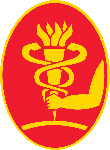Latest articles
October 2024 Br J Cardiol 2024;31(4) doi: 10.5837/bjc.2024.041 Online First
Cardiorenal effects of therapies for type 2 diabetes and obesity
Clifford J Bailey, Caroline Day

Sodium-glucose cotransporter type 2 (SGLT2) inhibitors and glucagon-like peptide-1 (GLP-1) receptor agonists are established glucose-lowering and weight-lowering agents used in the management of type 2 diabetes mellitus and obesity. Several recent clinical trials have provided evidence that these agents can decrease the risk of, and slow progression of, cardiovascular and renal diseases independently of their glucose-lowering and weight-lowering effects. In clinical trials and ‘real-world’ observational studies in people with and without diabetes, SGLT2 inhibitors have offered protection against heart failure and chronic kidney disease, while GLP-1 receptor agonists have been associated with reductions in atherosclerotic cardiovascular events and albuminuria. Based on this evidence, SGLT2 inhibitors and GLP-1 receptor agonists can now be considered for use beyond diabetes and obesity as new treatment options in the management of cardiorenal disease.
October 2024 Br J Cardiol 2024;31(4) doi: 10.5837/bjc.2024.042 Online First
Grüntzig’s technique, relearnt
Pitt O Lim

A quiet revolution without fanfare took place at a meeting, witnessed by over 1,000 people both in London and live streamed across the globe on 31 January 2024. It was unprecedented, going against received wisdom. That, it was possible to treat atherosclerotic coronary artery disease with an updated Andreas Grüntzig’s balloon alone, without the safety net and comfort of implanting a single stent. Three interactive cases were treated with the drug-coated balloon and all patients were same-day discharged. Seemingly a show of simplicity, parsimony and bravado, but dive a little deeper, the skill set for stent-free coronary intervention has been meticulously studied over the last 20 years by pioneers and early adopters alike. The sacred cow slayed on this historic day was that balloon-inflicted coronary dissection rarely leads to occlusion, having effective antiplatelet therapy on board. And, potentially occlusive dissection is, not only predictable, but this method can be used in the ambulatory care setting. Thus, saving hospital bed stays. This event will be remembered as the tipping point at which a paradigm shift has occurred, but going back to embracing Grüntzig’s lessons. This is timely too, considering that two decades of systematic stenting has led to stent failures comprising nearly a third of daily interventional workload.
October 2024 Br J Cardiol 2024;31(4) doi: 10.5837/bjc.2024.043 Online First
Long-term blood pressure variability: an emerging cardiovascular risk factor
Allis Lai, Lawrence Lam, Akshita Raminemi, Akhil Sonecha, Peter Sever

Clinical trials and observational studies have demonstrated that long-term systolic blood pressure variability derived from repeated measurements of visit-to-visit clinic blood pressure is an important predictor of cardiovascular outcomes, independent of average levels of systolic pressure. Even in patients with well-controlled blood pressure (<140/90 mmHg), high systolic blood pressure variability confers an increased risk of cardiovascular events. Systolic blood pressure variability is currently derived from several measurements of visit-to-visit clinic blood pressure and expressed as the standard deviation of systolic pressure. Values in excess of 12 are indicative of high systolic blood pressure variability. Ongoing studies aim to determine whether home blood pressure monitoring may be an alternative way of measuring blood pressure variability. Evidence from several clinical trials shows that long-acting calcium-channel blockers, such as amlodipine, and thiazide-like diuretics are the only antihypertensive drugs that reduce long-term systolic blood pressure variability, and should be used preferentially in patients with high variability.
October 2024 Br J Cardiol 2024;31(4) doi: 10.5837/bjc.2024.044 Online First
Subclavian venoplasty for device implantation in a district general hospital: a case series
Muhammad Usman Shah, Kelvin Lee, Hira Yousuf, David Morgan, Juan Fernandez

Subclavian venoplasty is commonly performed for subclavian vein stenosis in patients with long-term dialysis lines or fistulae. Such stenosis may also occur in patients with previously implanted intra-cardiac devices. It poses a problem if a further device upgrade or implantation is planned as the stenosis restricts the advancement of leads. Venoplasty before device implantation may provide a feasible alternative to lead tunnelling or extraction, which have their limitations. Four cases of varying complexities and devices that were implanted in patients with subclavian stenosis are presented herein. These were done in a district general hospital within the cardiology team. Venoplasty was performed using peripheral angioplasty balloons after which the device was implanted. All cases were performed successfully without any immediate complications with the patients discharged home the same day. These cases show the utility of subclavian venoplasty in facilitating device implantation without the need to utilise contralateral venous access, hence preserving venous access for the future. Additionally, they illustrate that this may be performed locally in a district general hospital setting, where appropriate expertise is available, with a high success rate and without the need to refer patients to an alternate tertiary care institute which may be associated with additional difficulties for the patient. To the best of our knowledge, this is the first instance where several cases of this procedure were performed successfully in a secondary care setting.
October 2024 Br J Cardiol 2024;31(4) doi: 10.5837/bjc.2024.045 Online First
Sudden cardiac death associated with a pathogenic genetic variant in HCN4
Gokul Parameswaran, Edward Blair, Hugh C Watkins, Julian OM Ormerod

Pathogenic genetic variants in the HCN4 (hyperpolarisation-activated and cyclic nucleotide-gated channel) gene can cause sinus node dysfunction, disrupting the function of the pacemaker region of the heart. Patients with such variants can present with a wide spectrum of arrhythmias but sudden death is generally considered rare. We report two cases from the same family with different outcomes to highlight a potential high-risk phenotype in HCN4-related disease.
September 2024 Br J Cardiol 2024;31:106–110 doi: 10.5837/bjc.2024.037
Lessons learnt from HF coding in primary care. What might best practice look like?
Amanda Crundall, Mary Crawshaw-Ralli, Ahmet Fuat, Jaya Authunuri, Kavita Oberoi, Jo Crossan, Sharon Jones

Heart failure (HF) is a prevalent and complex condition that demands precise and efficient management. This paper delves into a critical, yet often under-recognised, challenge in HF care – the accurate coding of patients on HF registers. We explore how discrepancies in coding, including missing patients and incorrect HF type classifications, can significantly impact patient management. The experiences of our healthcare system’s staff are examined to shed light on the real-world implications of these issues.
Clinicians and administrative staff in primary care can play a pivotal role in identifying, monitoring, and ensuring the accuracy of patient coding. By sharing their insights, we uncover the intricacies of addressing coding discrepancies and strategies suggested to optimise patient management. Furthermore, we investigate the technology and systems in place to aid staff in this endeavour.
This paper aims to contribute to the broader healthcare community’s understanding of the challenges related to coding accuracy in HF registers and to offer insights into potential solutions. By rectifying these coding discrepancies, we can enhance patient care, minimise potential oversights, and ultimately improve outcomes for individuals living with HF. Our findings underscore the significance of ensuring that no HF patient is missed or misclassified, emphasising the need for continued improvement in this vital aspect of HF care.
September 2024 Br J Cardiol 2024;31:111–4 doi: 10.5837/bjc.2024.038
Navigating the research landscape in cardiology. Part 4: beyond the finish line
Hibba Kurdi, William Fowkes, C Fielder Camm

In this four-part editorial series, we have looked at the significance of research within cardiology training in the UK. The first three instalments explored the impact of research on a career in cardiology, identified the diverse research avenues, and provided guidance on navigating the application process. In the final part of this series, our focus shifts to post-higher degree opportunities within the field, and discuss the skills developed in research that can be applied to clinical practice.
September 2024 Br J Cardiol 2024;31:85–7 doi: 10.5837/bjc.2024.039
Integrated working in cardiovascular care
Raj Thakkar

There is little doubt that demand on the National Health Service (NHS) has exceeded supply. Given the rhetoric of no more money, no new workforce, and no new estates, it is incumbent on us all to make better and more efficient use of the limited resource we do have, improve how we work together as one integrated health, community and social care ecosystem, and increase the value of every action we take. Cardiovascular services are no exception.
August 2024 Br J Cardiol 2024;31:92–7 doi: 10.5837/bjc.2024.031
Artificial intelligence in heart valve disease: diagnosis, innovation and treatment. A state-of-the-art review
Paul Bamford, Amr Abdelrahman, Christopher J Malkin, Michael S Cunnington, Daniel J Blackman, Noman Ali

In recent years, artificial intelligence (AI) has been used to improve the precision of valvular heart disease diagnosis and treatment. It has the ability to identify and risk stratify patients with valvular heart disease and holds promise in improving the innovation of new treatments through shorter, safer and more effective clinical trials. AI can help to guide the treatment of patients with valvular heart disease, by aiding in optimal device selection for transcatheter valvular interventions and, potentially, predicting the risk of specific complications. This review article explores the various potential applications of AI in the diagnosis and treatment of valvular heart disease in more detail.
Latest news
MEETING REPORT Online First
British Cardiovascular Society annual conference, 2024: back to the patient
September 6, 2024
NEWS Online First
Correspondence: Important safety aspects in SGLT2 inhibitor prescribing in heart failure
August 6, 2024
 The Aortic Dissection Charitable Trust
The Aortic Dissection Charitable Trust British Association for
British Association for British Heart Valve Society
British Heart Valve Society British Association for Nursing
British Association for Nursing British Geriatrics Society
British Geriatrics Society British Junior Cardiologists
British Junior Cardiologists







